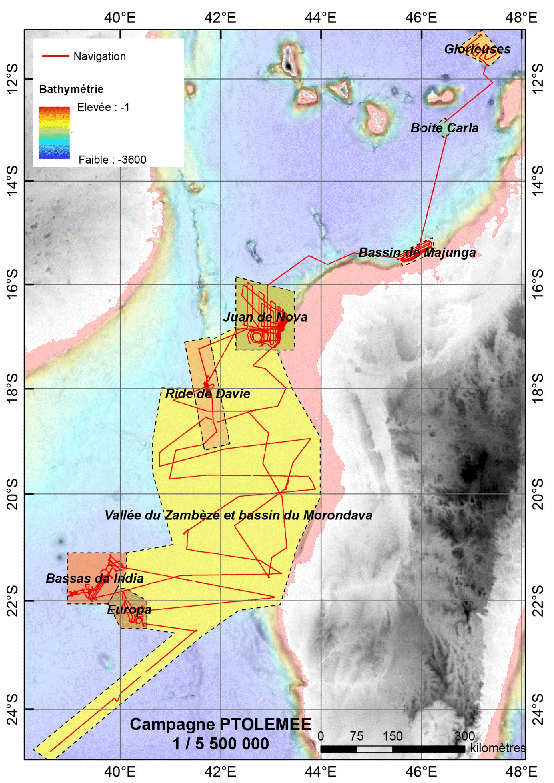PTOLEMEE
| Type | Oceanographic cruise |
|---|---|
| Set | This cruise is part of the set PAMELA : PASSIVE MARGINS EXPLORATION LABORATORIES |
| Ship | L'Atalante |
| Ship owner | Ifremer |
| Dates | 12/08/2014 - 21/09/2014 |
| Chief scientist(s) | JORRY Stéphan  |
GEO-OCEAN - UMR 6538 Univ. Brest, CNRS, Ifremer, Univ. Bretagne Sud Place Nicolas Copernic 29280 Plouzané |
|
| DOI | 10.17600/14000900 |
| Objective | The PTOLEMEE cruise is part of the Mozambique study zone of the PAssive Margin Exploration LAboratory (PAMELA) project, whose objectives are to establish a model for the evolution of an oblique margin along its entire topographic profile, by characterizing its initial topography and how it evolved, its deformation and all the sedimentary systems recorded there, from the delta to deep turbidite lobes, in a source-to-sink approach. Through the presence of coral platforms (carbonated primary production in the Scattered Islands) and deep sea siliciclastic gravity systems (sedimentary inputs from Mozambique and Madagascar catchment basins), the Mozambique Channel provides a unique example of a mixed sedimentary system where underwater morphologies and the associated sedimentary processes have never been previously observed. The PTOLEMEE cruise will mainly consist in geophysical surveying. Some of the objectives for this 41-day cruise include those set out in the initial PTOLEMEE application (evaluated by CNFH in 2010). They are to: map subsea morphologies in the French Exclusive Economic Zones (Europa, Bassas da India, Juan de Nova and Glorieuses), characterize the main axes of transport and sedimentary processes from the margins of carbonated systems to deep sedimentary basins, determine the geometrical and stratigraphic relationships between gravity processes coming from carbonated platforms and those passing through the Zambezi valley, establish sea level reconstitutions based on the migration of recent delta systems (which we suspect also played a role in pollution and burial of carbonated systems) current hidden under terrigenous sediments, and make comparisons. |


